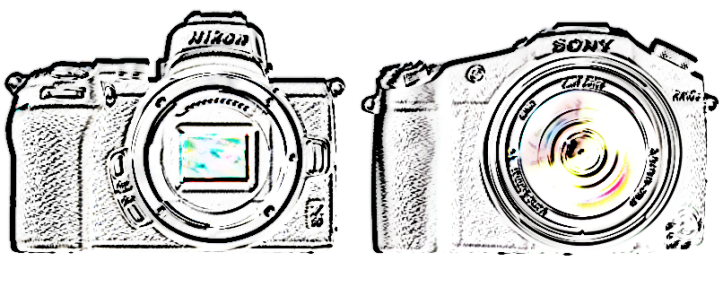As anticipated, Nikon is launching a DX (i.e. APS-C) model to go with its Z6 and Z7 full frame mirrorless cameras. However, the Z50 will, as a major differentiator, not include in-body image stabilisation (IBIS). This means there is some breathing space left for brands such as Pentax for whom having IBIS is a major selling point. The $859 body-only launch price leaves considerable breathing space, too, for those other competitors in the market that do offer IBIS on lower-spec bodies. The major advantage of IBIS is that all lenses can be image stabilised, including most vintage glass – where this is permitted (I don’t know if it’s the case on every IBIS camera), you just have to manually enter the focal length, and off you go into manual focus, manual aperture heaven. Don’t expect the same level of joy with old *zoom* lenses, though!
What else is there to say about the Z50? It’s got a 21 megapixel BSI CMOS Emmental sensor, and pop-up flash. Its 3.2″ touchscreen rear display tilts 180° down and around and 90° up, or you can look at the same image on a 2.36 million dot OLED electronic viewfinder (EVF) – basically standard specs at this point in time, nothing to particularly write home about. Its only SD card slot is in the battery compartment, and there is *no* XQD card support. The camera also uses a new battery, the EN-EL25, so expect to be buying more of those as the rating is 300 shots. (But remember that flash use is factored into this since the camera has a flash bulb built in – the CIPA standard does not include flash if the camera doesn’t have it, so comparisons aren’t always fair.)
For video aficionados, there is 4K at 30p and 24p, or 120 frames per second at 1080 (FullHD) resolution, with a 30 minute recording limit. Full resolution RAW or JPEG can be captured at 11 frames per second with continuous autofocus, but going by Nikon’s past track record and the price point, I’m guessing you’ll run into a buffer limitation within a few seconds.
The co-launched 16-50mm f/3.5-6.3 VR kit lens is styled like a bridge camera lens and seems to retract to much the same extent as the Pentax 18-50mm RE lens. In fact, the camera seems to emulate the characteristics of a bridge camera very much overall, with a rear-pokey viewfinder and very simplified controls all-around. To me, this suggests a clear picture of the target market for this camera – perhaps it’s fair to call this an ILBC, interchangeable lens bridge camera?
The second available Z-mount, DX format lens is a stabilised 50-250mm f/4.5 to f/6.3 with more conventional dimensions and features, including a “control ring” (focus or aperture). F-mount lenses require an FTZ adapter.
The camera will be available in November. The 16-50mm kit lens is best bought as part of a kit, but according to DPReview’s published prices, you can save $1 by buying the 50-250mm lens separately rather than as a kit option. Crazy times.

The apparent target market of the Z50 is interesting – similar attempts such as the Samsung NX1 and Pentax K-S1 have failed, but Canon’s SL line has been doing reasonably well. It will be interesting to see whether the Z50 can captivate the sense of imagination of that market. Given that it’s priced to compete with premium compacts ($999 with kit lens at launch) and looks like a bridge camera, its chances may not be so bad. It closely matches a Sony RX10 series bridge camera in size when the Z50’s standard zoom lens is attached. Whether it can become a gateway drug for Nikon’s Z system in the way the Digital Rebels once were for Canon may be decided in the WalMarts and BestBuys of this world, and by Nikon’s willingness to provide a reasonable upgrade path – perhaps including an even more compelling model that includes IBIS.
Related coverage: Nikon’s new Z5, an affordable full frame mirrorless




[…] New Nikon Z50 – bridge camera killer? […]
[…] Related coverage: New Nikon Z50 – bridge camera killer? […]